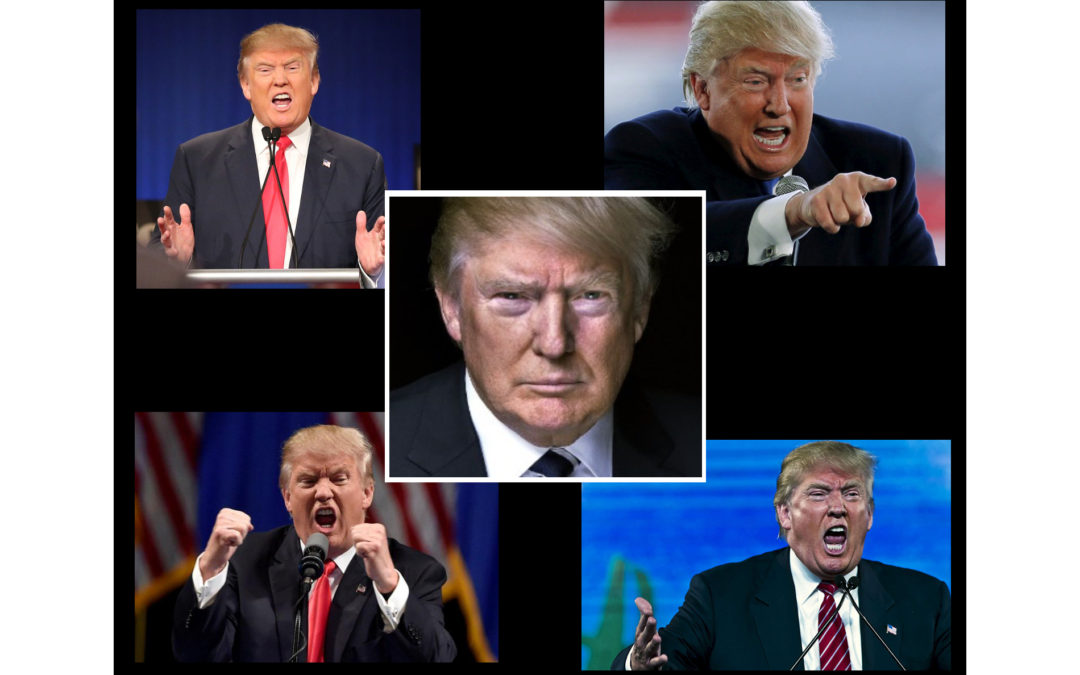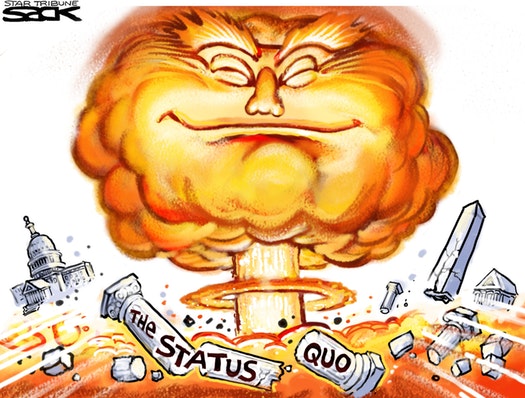
by Adam Hartung | Jan 5, 2018 | Defend & Extend, Innovation, Leadership
Fast Company just published 3 common behaviors that kill innovation. Congratulations! The editors reinforce that most management behavior and best practices are lethal to innovation.
All the way back in November, 2009, my Forbes column explained that organizations approach innovation entirely wrong- trying far too hard to build on historical company strengths, which leads to weak extensions that fail to generate sustainable growth. In November, 2011, my Forbes column identified the “killer comments” that leaders used to stop innovation. Fast Company’s list is remarkably similar to that 2011 column, though it is a shorter list. In June, 2015, my Forbes column described how HR best practices are designed to limit diversity in thinking- and always lead to killing innovation projects. Factually, as I wrote in February, 2011, almost nobody would hire the next Steve Jobs if he applied for a job!
Quite simply, we have built organizations that rigidly adhere to continuing past processes, and are hard wired to resist innovation. This phenomenon has been around for a long time, even though Fast Company just discovered it, and I’ve been writing about it for 9 years. Give my past columns a read and you’ll be forewarned of the risks to brainstorming, or throwing together innovation teams, without a system of new thinking.
Fortunately, smart leaders today see that by focusing on external data and cleverly using outside thinkers, innovation can create a high-growth future. The approach I’ve been teaching organizations for years. Only by overcoming outdated, historical management practices can a modern organization thrive. You can do it- if you smartly use trends and new approaches.

by Adam Hartung | Jul 28, 2017 | Disruptions, Leadership
The news was filled this week with stories about President Trump’s “unorthodox” management style. From tweeting his thoughts on replacing Attorney General Jeff Sessions, to tweeting his multiple positions on healthcare law changes, to hiring a new communications director who lets loose with expletive-laden rants, people have been left questioning what sort of leadership style President Trump is trying to display.
Donald Trump promised to be a “disruptive leader”
Donald Trump ran for office as an outsider who pledged to disrupt Washington politics. This was a message well received by many people. They felt that “business as usual” in national politics was not serving them well, so they wanted change. To them a disruptor could find a way to steer national politics back onto a course that was more aligned with the conservative middle Americans. These voters felt that a businessman entrepreneur just might be the kind of leader who could disrupt the status quo in order to get something done for them.
Unfortunately, things have not worked out that way. And largely this can be traced to the leadership style of President Trump. Rather than a dedicated disruptor, ready to implement change, President Trump has proven to be a chaos generator that has stymied progress on pretty nearly all issues. Disruptions can lead to positive change. Chaos leads to stagnation and degradation as the system searches for homeostasis and a path forward.
From early age, we are taught not to be disruptive. Disrupting someone during school, religious ceremonies, entertainment events leads to distractions and an inability to remain focused on the goal. Thus, we are mostly taught to listen, learn and do what we’re told. However, we also recognize there is a time to be disruptive, because the act of intervening in the process at times can lead to far more positive outcomes than maintaining the course.
But it takes good judgement, and reasoned action, to be a positive disruptive influence. If you are in a crowded theater and you recognize a blaze it is time to disrupt the stage presentation. But you have a choice. If you jump up and yell “fire” you will create chaos. Everyone suddenly realizes a problem, but with no idea how to deal with it a thousand different solutions emerge simultaneously. Everyone starts looking out for their own interest, and they trample those around them in an effort to implement their own plans. Many people get hurt, and frequently the goal of saving everyone by disrupting the presentation is lost in carnage created by the bad disruption leading to chaos.
What is successful disruptive leadership?
So, if you sense a pending fire you are far smarter to develop a plan, such as activating the evacuation notices and opening the exits, prior to making an alert. And then, instead of yelling “fire” you say to folks “an issue has developed, please make your way down the evacuation routes to the open exits while we deal with the situation. Please remain calm so everyone can exit safely.” Your disruption can lead to successful outcome, rather than chaos.
I’ve spent over 20 years focusing on how disruptions can lead to positive change. And it is clear that with disruptive innovations, and disruptive business models, their success relies on leaders that understand how to implement disruptions effectively. Leadership matters.
Disruptive leaders think very hard about their desired outcomes, and they go to great lengths to describe what those future, better outcomes will look like. They then create a plan of action before they do anything. While the innovation might well be known, they are very, very careful to think through how that innovation will be adopted, then nurtured to gain acceptance and hopefully become mainstream. These leaders are very careful about their language choices, and where they communicate, in order to encourage people to accept their vision and join with their plan. They seek adoption rather than confrontation, and they discuss the desired outcomes rather than the disruption itself. They gain trust and build a consensus for change, and then they systematically roll out their plan, which they adjust as necessary to meet unexpected market conditions. They gradually move people along the implementation route by relentlessly focusing on the better outcome and reducing the fear inherent in accepting the disruption.
Five ways Donald Trump fails as a successful disruptive leader:
- The President has not portrayed a superior outcome which he can use to rally people to his viewpoint. Despite talking about “making America great again” there is no picture of what that looks like. What is this future “great” America he envisions and wants us to buy into? What are the poor outcomes of today that he will greatly improve, leading to vastly superior future outcomes? Without a clear description of the future, it is hard to gain supporters. For example, will changes in health care improve care? Lower the cost? What are the benefits, the better outcomes, of change? What is the benefit of replacing the sitting attorney general?
- The President has not laid out his plan for bringing people on board to his future. Look at the recent effort to implement new health care legislation. At times the President has said there is a need to repeal current legislation and replace it, but he has offered no description of what the replacement should look like. At other times he has said to repeal current legislation, but he has offered no insight into how that would lead to better outcomes than the current legislation provides. At yet other times he has said to do nothing, and he expressed his hope that current legislation would fail even though he admitted this would lead to an outcome far worse than the status quo. By not creating a plan, and bringing people on board to his plan, he has created chaos in the legislative process.
- President’s Trumps messages are built on negative language, not positive language about the future. His messages are long on how some person or current situation is weak, rather than explaining what a strong future would look like. He frequently attacks his predecessor, or his former electoral opponent, but does little to say what is good about his Presidency or recommendations or what he is specifically going to do that will create better outcomes. He frequently talks about firing people in his administration, but talks little about the specifics of what good work people in his administration are doing. These language choices are exclusive, not inclusive, and they create chaos among those who work in his administration, and members of Congress. Instead of understanding the President’s goals and objectives people are wondering “what will he say next?” And by appointing a communications director who uses outrageous, unacceptable and incendiary language he further exacerbates the problem of everyone losing any insight to his message because we are stunned and amazed at the choice of language.
- President Trump has the ability to communicate from the most Presidential locations. He can provide TV, radio and internet addresses from the oval office, or the White House platform. He can invite media in for press conferences or interviews to discuss his goals and ambitions, plans and pending decisions. Or he can make himself, or his staff, available for press interviews. And while he does some of this, we all spend every day wondering what Tweet he will send over the Twitter social network next. Several million people use Twitter. It is for social exchange. For the President to announce policy positions (such as banning transgenders from military service) or evaluations of key subordinates (such as referring to the attorney general as weak) or military policy (such as opining on the potential retribution toward North Korea) via Twitter belies the nature of the office and his role. His selection of communication venues only serves to make his comments less valuable, rather than more important.
- President Trump neither remains consistent in his communications, nor does he exert loyalty. Changes on health care and denouncing his own staff does not create trust. How are people in the legislature, regulatory agencies or military going to become advocates for his goals when they don’t know if he can be trusted to support their actions, or support them as employees? If you want people to take a different course of action, to let go of the status quo, they have to trust you. Disruptive leaders time and again must state their positions with clarity and demonstrate support for those who do their best to promote the disruptive agenda. They battle fear of the future with clarity around their support for future outcomes those who help describe how the future will be better.
There are times for disruptive leadership. Status quo models become outdated, and outcomes decline as a result. Change offers the opportunity for better outcomes, and helping people migrate to new innovations helps them toward a better future. But implementing innovation and change requires skill at being a disruptive leader. If the process is bungled, you can look like the guy who started a deadly rampage by yelling “fire” when a more reasoned approach would have prevailed. If you don’t follow the best practices of disruptive leadership, you will create chaos.

by Adam Hartung | Aug 21, 2015 | Current Affairs, Disruptions, Leadership, Transparency
How clearly I remember. I was in the finals of my third grade arithmetic competition. Two of us at the chalkboard, we both scribbled the numbers read to us as fast as we could, did the sum and whirled to look at the judges. Only my competitor was a hair quicker than me, so I was not the winner.
As we walked to the car my mother was quite agitated. “You lost to a GIRL” she said; stringing out that last word like it was some filthy moniker not fit for decent company to here. Born in 1916, to her it was a disgrace that her only son lost a competition to a female.
But it hit me like a tsunami wall. I had underestimated my competitor. And that was stupid of me. I swore I would never again make the mistake of thinking I was better than someone because of my male gender, white skin color, protestant christian upbringing or USA nationality. If I wanted to succeed I had to realize that everyone who competes gets to the end by winning, and they can/will beat me if I don’t do my best.
 This week 1st Lt. Shaye Haver, 25, and Capt. Kristen Griest, 26, graduated Army Ranger training. Maybe the toughest military training in the world. And they were awarded their tabs because they were good – not because they were women.
This week 1st Lt. Shaye Haver, 25, and Capt. Kristen Griest, 26, graduated Army Ranger training. Maybe the toughest military training in the world. And they were awarded their tabs because they were good – not because they were women.
In retrospect, it is somewhat incredible that it took this long for our country to begin training all people at this level. If someone is good, why not let them compete? In what way is it smart to hold back someone from competing based on something as silly as their skin color, gender, religious beliefs or sexual orientation?
Our country, in fact much of mankind, has had a long history of holding people back from competing. Those in power like to stay in power, and will use about any tool they can to maintain the status quo – and keep themselves in charge. They will use private clubs, secret organizations, high investment rates, difficult admission programs, laws and social mores to “keep each to his own kind” as I heard far too often throughout my youth.
As I went to college I never forgot my 3rd grade experience, and I battled like crazy to be at the top of every class. It was clear to me there were a lot of people as smart as I was. If I wanted to move forward, it would be foolish to expect I would rise just because the status quo of the time protected healthy white males. There were plenty of women, people of color, and folks with different religions who wanted the spot I wanted – and they would win that spot. Maybe not that day, but soon enough.
In the 1980s I did a project for The Boston Consulting Group in South Africa. As I moved around that segregated apartheid country it was clear to me that those supporting the status quo did so out of fear. They weren’t superior to the native South Africans. But the only way they could maintain their lifestyle was to prohibit these other people from competing.
And that proved to be untenable. The status quo fell, and when it did many of European extraction quickly fled – unable to compete with those they long kept from competing.
In the last 30 years we’ve coined the term “diversity” for allowing people to compete. I guess that is a nice, politically favorable way to say we must overcome the status quo tools used to hold people back. But the drawback is that those in power can use the term to imply someone is allowed to compete, or even possibly wins, only because they were given “special permission” which implies “special terms.”
That is unfortunate, because most of the time the only break these folks got was being allowed to, finally, compete. Once in the competition they frequently have to deal with lots of attacks – even from their own teammates. Jim Thorpe was a Native American who mesmerized Americans by winning multiple Gold Medals at the 1912 Olympics, and embarrassing the Germans then preaching national/racial superiority as they planned the launch of WW1. But, once back on American soil it didn’t take long for his own countrymen to strip Mr. Thorpe of his medals, unhappy that he was an “Indian” rather than a white man. He tragically died a homeless alcoholic.
And never forget all the grief Jackie Robinson bore as the first African-American professional athlete. Branch Rickey overcame the status quo police by giving Mr. Robinson a chance to play in the all-white professional major league baseball. But Mr. Robinson endured years of verbal and physical abuse in order to continue competing, well over and beyond anything suffered by any of his white peers. (For a taste of the difficulties catch the HBO docudrama “42.”)
In 2014, 4057 highly trained, fit soldiers entered Ranger training. 1,609 (40%) graduated. In this latest class 364 soldiers started; 136 graduated (37%.) Officers Griest and Haver are among the very best, toughest, well trained, well prepared, well armed and smartest soldiers in the entire world. (If you have any doubts about this I encourage you to watch the HBO docudrama “Lone Survivor” about Army Rangers trapped behind enemy lines in Afghanistan.)
Officers Griest and Haver are like every other Ranger. They are not “diverse.” They are good. Every American soldier who recognizes the strength of character and tenacity it took for them to become Rangers will gladly follow their orders into battle. They aren’t women Rangers, they are Rangers.
When all Americans learn the importance of this lesson, and begin to see the world this way, we will allow our best to rise to the top. And our history of finding and creating great leadership will continue.

by Adam Hartung | May 8, 2015 | Current Affairs, Defend & Extend, Food and Drink, In the Swamp, In the Whirlpool, Leadership
McDonald’s just had another lousy quarter. All segments saw declining traffic, revenues fell 11%. Profits were off 33%. Pretty well expected, given its established growth stall.
A new CEO is in place, and he announced is turnaround plan to fix what ails the burger giant. Unfortunately, his plan has been panned by just about everyone. Unfortunately, its a “me too” plan that we’ve seen far too often – and know doesn’t work:
- Reorganize to cut costs. By reshuffling the line-up, and throwing out a bunch of bodies management formerly said were essential, but now don’t care about, they hope to save $300M/year (out of a $4.5B annual budget.)
- Sell off 3,500 stores McDonald’s owns and operate (about 10% of the total.) This will further help cut costs as the operating budgets shift to franchisees, and McDonald’s book unit sales creating short-term, one-time revenues into 2018.
- Keep mucking around with the menu. Cut some items, add some items, try a bunch of different stuff. Hope they find something that sells better.
- Try some service ideas in which nobody really shows any faith, like adding delivery and/or 24 hour breakfast in some markets and some stores.
 Needless to say, none of this sounds like it will do much to address quarter after quarter of sales (and profit) declines in an enormously large company. We know people are still eating in restaurants, because competitors like 5 Guys, Meatheads, Burger King and Shake Shack are doing really, really well. But they are winning primarily because McDonald’s is losing. Even though CEO Easterbrook said “our business model is enduring,” there is ample reason to think McDonald’s slide will continue.
Needless to say, none of this sounds like it will do much to address quarter after quarter of sales (and profit) declines in an enormously large company. We know people are still eating in restaurants, because competitors like 5 Guys, Meatheads, Burger King and Shake Shack are doing really, really well. But they are winning primarily because McDonald’s is losing. Even though CEO Easterbrook said “our business model is enduring,” there is ample reason to think McDonald’s slide will continue.
Possibly a slide into oblivion. Think it can’t happen? Then what happened to Howard Johnson’s? Bob’s Big Boy? Woolworth’s? Montgomery Wards? Size, and history, are absolutely no guarantee of a company remaining viable.
In fact, the odds are wildly against McDonald’s this time. Because this isn’t their first growth stall. And the way they saved the company last time was a “fire sale” of very valuable growth assets to raise cash that was all spent to spiffy up the company for one last hurrah – which is now over. And there isn’t really anything left for McDonald’s to build upon.
Go back to 2000 and McDonald’s had a lot of options. They bought Chipotle’s Mexican Grill in 1998, Donato’s Pizza in 1999 and Boston Market in 2000. These were all growing franchises. Growing a LOT faster, and more profitably, than McDonald’s stores. They were on modern trends for what people wanted to eat, and how they wanted to be served. These new concepts offered McDonald’s fantastic growth vehicles for all that cash the burger chain was throwing off, even as its outdated yellow stores full of playgrounds with seats bolted to the floors and products for 99cents were becoming increasingly not only outdated but irrelevant.
But in a change of leadership McDonald’s decided to sell off all these concepts. Donato’s in 2003, Chipotle went public in 2006 and Boston Market was sold to a private equity firm in 2007. All of that money was used to fund investments in McDonald’s store upgrades, additional supply chain restructuring and advertising. The “strategy” at that time was to return to “strategic focus.” Something that lots of analysts, investors and old-line franchisees love.
But look what McDonald’s leaders gave up via this decision to re-focus. McDonald’s received $1.5B for Chipotle. Today Chipotle is worth $20B and is one of the most exciting fast food chains in the marketplace (based on store growth, revenue growth and profitability – as well as customer satisfaction scores.) The value of all of the growth gains that occurred in these 3 chains has gone to other people. Not the investors, employees, suppliers or franchisees of McDonald’s.
We have to recognize that in the mid-2000s McDonald’s had the option of doing 180degrees opposite what it did. It could have put its resources into the newer, more exciting concepts and continued to fidget with McDonald’s to defend and extend its life even as trends went the other direction. This would have allowed investors to reap the gains of new store growth, and McDonald’s franchisees would have had the option to slowly convert McDonald’s stores into Donato’s, Chipotle’s or Boston Market. Employees would have been able to work on growing the new brands, creating more revenue, more jobs, more promotions and higher pay. And suppliers would have been able to continue growing their McDonald’s corporate business via new chains. Customers would have the benefit of both McDonald’s and a well run transition to new concepts in their markets. This would have been a win/win/win/win/win solution for everyone.
But it was the lure of “focus” and “core” markets that led McDonald’s leadership to make what will likely be seen historically as the decision which sent it on the track of self-destruction. When leaders focus on their core markets, and pull out all the stops to try defending and extending a business in a growth stall, they take their eyes off market trends. Rather than accepting what people want, and changing in all ways to meet customer needs, leaders keep fiddling with this and that, and hoping that cost cutting and a raft of operational activities will save the business as they keep focusing ever more intently on that old core business. But, problems keep mounting because customers, quite simply, are going elsewhere. To competitors who are implementing on trends.
The current CEO likes to describe himself as an “internal activist” who will challenge the status quo. But he then proves this is untrue when he describes the future of McDonald’s as a “modern, progressive burger company.” Sorry dude, that ship sailed years ago when competitors built the market for higher-end burgers, served fast in trendier locations. Just like McDonald’s 5-years too late effort to catch Starbucks with McCafe which was too little and poorly done – you can’t catch those better quality burger guys now. They are well on their way, and you’re still in port asking for directions.
McDonald’s is big, but when a big ship starts taking on water it’s no less likely to sink than a small ship (i.e. Titanic.) And when a big ship is badly steered by its captain it flounders, and sinks (i.e. Costa Concordia.) Those who would like to think that McDonald’s size is a benefit should recognize that it is this very size which now keeps McDonald’s from doing anything effective to really change the company. Its efforts (detailed above) are hemmed in by all those stores, franchisees, commitment to old processes, ingrained products hard to change due to installed equipment base, and billions spent on brand advertising that has remained a constant even as McDonald’s lost relevancy. It is now sooooooooo hard to make even small changes that the idea of doing more radical things that analysts are requesting simply becomes impossible for existing management.
And these leaders, frankly, aren’t even going to try. They are deeply wedded, committed, to trying to succeed by making McDonald’s more McDonald’s. They are of the company and its history. Not the CEO, or anyone on his team, reached their position by introducing a revolutionary new product, much less a new concept – or for that matter anything new. They are people who “execute” and work to slowly improve what already exists. That’s why they are giving even more decision-making control to franchisees via selling company stores in order to raise cash and cut costs – rather than using those stores to introduce radical change.
These are not “outside thinkers” that will consider the kinds of radical changes Louis V. Gerstner, a total outsider, implemented at IBM – changing the company from a failing mainframe supplier into an IT services and software company. Yet that is the only thing that will turn around McDonald’s. The Board blew it once before when it sold Chipotle, et.al. and put in place a core-focused CEO. Now McDonald’s has fewer resources, a lot fewer options, and the gap between what it offers and what the marketplace wants is a lot larger.
by Adam Hartung | Sep 30, 2013 | Current Affairs, Defend & Extend, Leadership, Lock-in
Last week we learned that there is no doubt, the world is warming. A U.N. report affirmed by some 1,000 scientists asserted 95% confidence as to the likely outcomes, as well as the cause. We must expect more volatility in weather, and that the oceans will continue rising.
Yet, most people really could have cared less. And a vocal minority still clings to the notion that because the prior decade saw a slower heating, perhaps this will all just go away.
Incredibly, for those of us who don't live and work in Florida, there was CNN news footage of daily flooding in Miami's streets due to current sea levels which have risen over last 50 years. Given that we can now predict the oceans will rise between 1 and 6 feet in the next 50 years, it is possible to map the large areas of Miami streets which are certain to be flooded.
There is just no escaping the fact that the long-term trend of global warming will have a remarkable impact on everyone. It will affect transportation, living locations, working locations, electricity generation and distribution, agriculture production, textile production – everything will be affected. And because it is happening so slowly, we actually can do lots of modeling about what will happen.
Yet, I never hear any business leaders talk about how they are planning for global warning. No comments about how they are making changes to keep their business successful. Nor comments about the new opportunities this will create. Even though the long-term impacts will be substantial, the weather and how it affects us is treated like the status quo.
What does this have in common with the government shutdown?
America has known for decades that its healthcare system was dysfunctional; to be polite. It was incredibly expensive (by all standards) and yet had no better outcomes for citizens than other modern countries. For over 20 years efforts were attempted to restructure health care. Yet as the morass of regulations ballooned, there was no effective overhaul that addressed basic problems built into the system. Costs continued to soar, and more people joined the ranks of those without health care, while other families were bankrupted by illness.
Finally, amidst enormous debate, the Affordable Care Act was passed. Despite wide ranging opinions from medical doctors, nurses, hospital and clinic administrators, patient advocacy groups, pharmaceutical companies, medical device companies and insurance companies (to name just some of those with a vested interest and loud, competing, viewpoints) Congress passed the Affordable Care Act which the President signed.
Like most such things in America, almost nobody was happy. No one got what they wanted. It was one of those enormous, uniquely American, compromises. So, like unhappy people do in America, we sued! And it took a few years before finally the Supreme Court ruled that the legislation was constitutional. The Affordable Care Act would be law.
But, people remain who simply do not want to accept the need for health care change. So, in a last ditch effort to preserve the status quo, they are basically trying to kidnap the government budget process and hold it hostage until they get their way. They have no alternative plan to replace the Affordable Care Act. They simply want to stop it from moving forward.
What global warming and the government shut down have in common are:
- Very long-term problems
- No quick solution for the problem
- No easy solution for the problem
- If you do nothing about the problem today, you have no immediate calamity
- Doing anything about the problem affects almost everyone
- Doing anything causes serious change
So, in both cases, people have emerged as the Status Quo Police. They take on the role of stopping change. They will do pretty much anything to defend & extend the status quo:
- Ignore data that is contradictory to the best analytical views
- Claim that small probability outcomes (that change may not be necessary) justifies doing nothing
- Delay, delay, delay taking any action until a disaster requires action
- Constantly claim that the cost of change is not justified
- Claim that the short-term impact of change is more deleterious than the long-term benefits
- Assume that the status quo will somehow resolve itself favorably – with no supporting evidence or analysis
- Undertake any action that preserves the status quo
- Threaten a "scorched earth policy" (that they will create big, immediate problems if forced to change the status quo)
The earth is going to become warmer. The oceans will rise, and other changes will happen. If you don't incorporate this in your plans, and take action, you can expect this trend will harm you.
U.S. health care is going to be reformed. How it will happen is just starting. How it will evolve is still unclear. Those who create various scenarios in their plans to prepare for this change will benefit. Those who do nothing, hoping it goes away, will find themselves struggling.
The Status Quo Police, trying their best to encourage people to ignore the need for change – the major, important trends – are helping nobody. By trying to preserve the status quo they inhibit effective planning, and action, to prepare for a different (better) future.
Does your organization have Status Quo Police? Are their functions, groups or individuals who are driven to defend and extend the status quo – even in the face of trends that demonstrate change is necessary? Can they stop conversations around substantial change? Are they allowed to stop future planning for scenarios that are very different from the past? Can they enforce cultural norms that stop considering new alternatives? Can they control resources resulting in less innovation and change?
Let's learn from these 2 big issues. Change is inevitable. It is even necessary. Trying to preserve the status quo is costly, and inhibits taking long-term effective action. Status Quo Police are obstructionists who keep us from facing, and solving, difficult problems. They don't help our organizations create a new, more successful future. Only by overcoming them can we reach our full potential, and create opportunities out of change.







